OKINAWA: Eclectic and Original
Okinawa Prefecture is a group of subtropical islands in the south of Japan. It previously thrived as a separate country called the Ryukyu Kingdom, which maintained its independence for 450 years. It did this by accepting and incorporating foreign influences. That approach proved useful once again in the 20th century, during the postwar US occupation. In this program, broadcaster Peter Barakan meets people who worked hard to heal the wounds of war, and reconstruct Okinawa's cultural heritage.
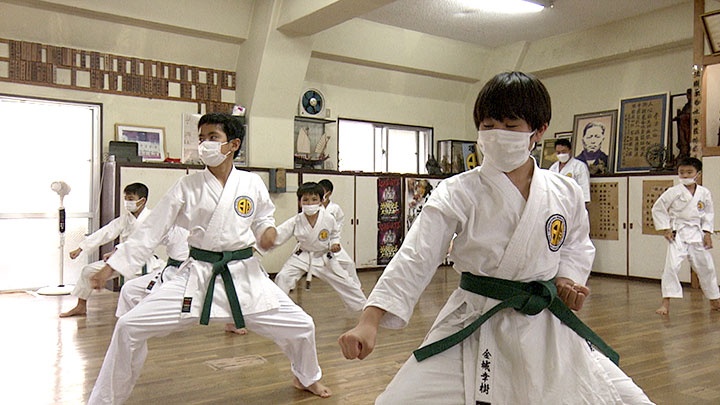
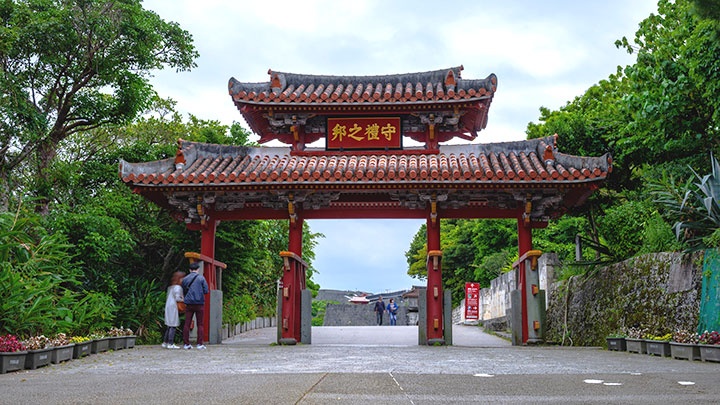
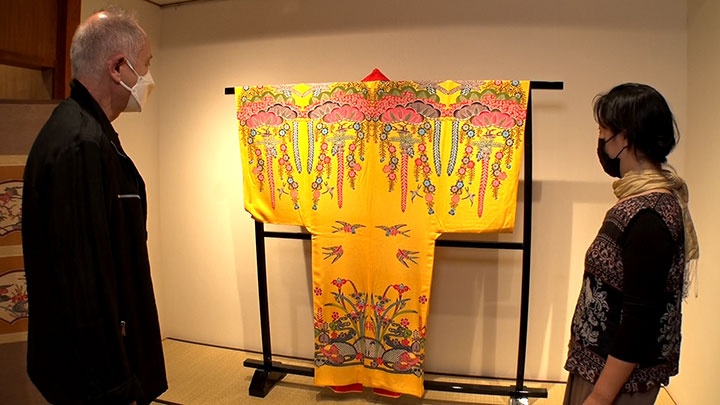
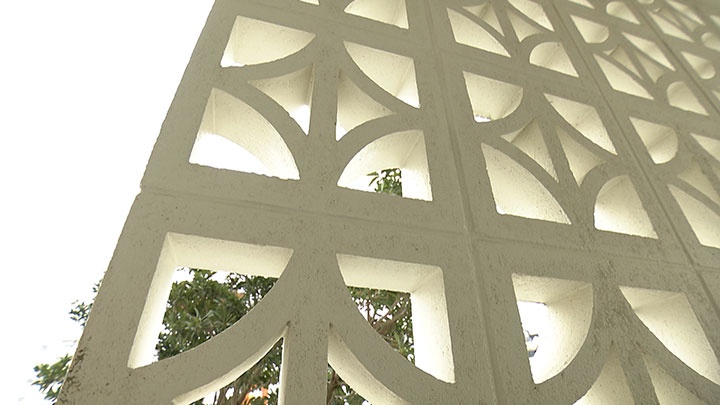
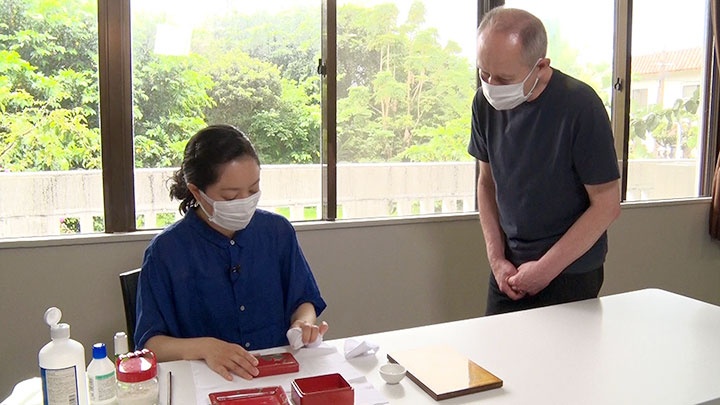
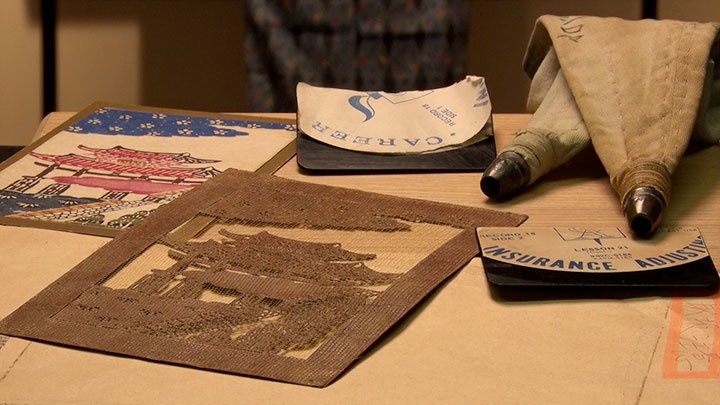
Transcript
Okinawa is a group of subtropical islands in the far south of Japan.
Highlights of the natural beauty of the islands include coral...
and untouched forest.
Over the years, Okinawa's circumstances gave rise to a unique culture.
Its architecture, dancing and handicrafts reflect a combination of Okinawan aesthetics and outside influences.
In 1945, Okinawa was the setting for brutal conflict with the US military.
Around 200,000 people died.
Many features of everyday life and culture were destroyed.
But in the following years, while under US control, Okinawa began to recover.
And after nearly three decades, the territory returned to Japan.
I'm in Okinawa, Japan's southern prefecture.
After the end of the Second World War,
Okinawa was under American control until it was returned to Japan in 1972, exactly 50 years ago.
In earlier times, Okinawa was a separate country known as the Ryukyu Kingdom,
a thriving society that had close ties to both China and Japan.
For 450 years, the Ryukyu Kingdom was an independent political entity in the region between China and Japan.
The kingdom amassed great wealth by trading with both countries, as well as with nations in Southeast Asia.
How was such a small kingdom able to fare so well?
To find out, I travelled to Okinawa.
I discovered a sense of openness and curiosity:
a willingness to incorporate features of other cultures in an original combination.
This philosophy contributed to Okinawa's postwar reconstruction.
It is, in fact, an approach to life that seems to have been a feature of local identity
since the days of the Ryukyu kingdom.
First, I visited Shuri Castle, a complex at the heart of Ryukyu politics and culture.
Good morning.
Hello.
Nice to meet you.
Nice to meet you too.
My guide, Uezato Takashi,
is a historian with a detailed understanding of the castle's architecture.
This is Shureimon, a decorative gate
at the entrance to Shuri Castle.
It's built in a distinctive
Chinese style.
This design is rarely seen
in Japanese castles.
The Ryukyu Kingdom had diplomatic
relations with Chinese dynasties.
That was a major influence.
A sign on the gate says, "a country that upholds propriety."
This was intended to convey to Chinese envoys a sense of the kingdom's noble standards.
And this gate offered those guests a warm welcome.
Its shape was inspired by Chinese architecture.
Here's another connection to China.
This is "Zuisenmon," which translates as "auspicious spring gate."
It's named after a nearby spring.
There, you'll find this dragon carving that was a gift from a Chinese emperor in the 16th century.
The imperial emissary praised the quality of the water.
Other features of the castle have an authentic Ryukyu appeal.
For example, its walls.
This undulating appearance is very unlike the straight walls of castles elsewhere in Japan.
It looks beautiful. We believe that's
one reason why this shape was chosen.
Another reason is its
defensive merit.
You can repel enemies approaching
from many different directions.
That was a key factor, too.
Here's another Ryukyu feature.
It's an "utaki," a sacred space where people pray.
Utaki are found in about 2,000 locations scattered across Okinawa.
The utaki at Shuri Castle is especially important.
According to Ryukyu legend, it was built by divine powers.
Most castles in mainland Japan were
built solely for military reasons.
Most castles in Okinawa, meanwhile,
also had a religious function.
That difference makes the ruins
here quite distinctive.
Next, we head for a key area of the complex where Ryukyu monarchs once conducted affairs of state.
But when you step through the gate, there is no building to be seen.
The Seiden, or main building, once
stood in the space in front of us.
It was almost completely destroyed
in a fire on October 31, 2019.
People were shocked, both
in Okinawa, and elsewhere.
This is what it looked like.
The architecture was influenced by Chinese palaces,
but also incorporated aspects of Japanese temples and shrines.
The curved roof at the front, for example, is common in Japanese architecture.
The buildings on either side hosted visitors from Japan and China.
The building to the south, which featured natural wood and tatami flooring, was inspired by Japan.
The building to the north was bright red, a Chinese influence.
The Ryukyu Kingdom had a
relationship with both countries.
These buildings were symbolic of that.
Oh, this is right at the top now.
Oh, you can see all the way to the sea. That's a nice view.
This is Shuri Castle's
highest lookout point.
It still has a very imposing presence.
Does it have a lot of symbolism for people in Okinawa, even now?
It dates back to Ryukyu times.
It was long at the center of local
history, culture and diplomacy.
The Ryukyu Kingdom eventually
became Okinawa Prefecture.
But the castle continued to serve as
a visual reminder of the islands' culture.
So yes, it retains a lot of symbolic power.
The Ryukyu Kingdom was sandwiched between China and Japan.
Yet it managed to stay independent, and thrive, for 450 years.
How was that done?
The Ryukyu Kingdom emerged in the early 15th century following a power struggle among local domains.
The new nation pledged loyalty to China, which extended trading rights in return.
The Ryukyu Kingdom became a prosperous trading hub,
dealing in Japanese swords, Southeast Asian spices, and various other goods.
Ryukyu gained an advantage in diplomacy and trade by employing Chinese settlers to prepare documents,
or to work as interpreters and navigators.
Descendants of people who came from China to the Ryukyu Kingdom up to 600 years ago still live in Okinawa.
This building dedicated to the Chinese philosopher Confucius is in Kume,
a district in the city of Naha that is home to many of those descendants.
The community holds regular gatherings.
Today they're engrossed in a Chinese board game.
Apparently it's similar to chess.
These get-togethers are a fun way for the group to preserve some ancestral customs.
Here's one of the group's members: Yagi Meitatsu.
One of his ancestors, Tei Gisai,
moved to Okinawa from what is now Fujian Province, in China.
Tei Gisai was proficient at composing
official documents, and at navigation.
At the time, the Ryukyu Kingdom had
diplomatic relations with Southeast Asia.
So he went to modern-day Thailand,
Vietnam, Singapore, and so on.
My family are proud to have him
as our ancestor.
Board games aren't the only example of Chinese influence.
Okinawan karate incorporated aspects of Chinese martial arts.
Okinawan karate subsequently diversified, and these days there are several different schools.
Yagi is a teacher in the "Goju-ryu" school,
and he's helping to cultivate the next generation of practitioners.
To aid the development of Ryukyu,
China sent lots of experts.
They included martial arts experts,
among many other specialists.
They also shared knowledge about
politics, economics, and education.
And our community has a duty
to pass that knowledge on.
By giving Chinese settlers key roles,
the Ryukyu Kingdom established a strong bond between Okinawa and China.
At the beginning of the 17th century, the Ryukyu Kingdom changed dramatically.
An army of 3,000 Japanese warriors conquered the islands,
which then became subject to Japanese authority.
However, the Ryukyu Kingdom was allowed to maintain its own relations with China,
to whom it had previously sworn loyalty.
The kingdom ended up serving both countries: China and Japan.
Even so, Ryukyu managed to preserve a degree of independence.
But how did it manage to do that?
This museum, in the city of Urasoe, offers a clue.
It has a display of Ryukyu lacquerware.
Items like this were given in tribute to members of the Japanese or Chinese ruling classes.
Our guide is the facility's director, Miyazato Masako.
- Look at this one. It's dazzling.
- Oh, that's beautiful, yes.
This tray was made using a "raden" technique,
where iridescent seashell is cut and then applied to create a pattern or design.
This was presented to
the Chinese emperor.
The emperor's symbol was
a five-clawed dragon.
So the tray was decorated
with that design.
The inlay was created using the shell of a marine snail found in local waters.
When viewed from different angles the colors change, and these rainbow hues came to be prized.
There are several hundred of these
at the Palace Museum in Beijing.
- The same design?
- Yes, the same design.
You can't mass produce something like this.
The Ryukyu Kingdom was small, but it
had a rich culture, and skilled artisans.
Giving trays like this to the emperor
was an expression of cultural pride.
Influential Japanese, meanwhile, loved these stylish cases.
The raden here presents a Chinese-style landscape.
It's another example of the Ryukyu Kingdom's love of combining different cultures.
They sent many of these cases to Japan, as gifts for the shogun and feudal lords.
At the time, Japan's elite were influenced by Confucian thought,
and products in a Chinese style were high status items.
Lacquerware with a Chinese look was prized.
17th to 18th centuries.
That must have been very, very cool, I think, in those days.
The Ryukyu Kingdom made
lacquerware for both China and Japan.
But they made it differently
to suit each recipient.
They took the values and tastes of
each country into account.
Generous gifts of exquisite lacquerware made it easier for the Ryukyu Kingdom
to develop strong relations with both China and Japan.
Another common gift to China was fabric dyed using a technique called "bingata."
In the Ryukyu islands, bingata garments were luxury items, worn only by royalty and aristocrats.
This workshop is one of the places where that fabric was made.
It has been operating for over 300 years.
- Hello! Nice to meet you.
- Nice to meet you too!
Shiroma Azuki is in charge of production.
She presents some of their work.
This classic pattern has existed for centuries.
The yellow is very striking.
It's not a color you see very much in kimono.
Even in Okinawa's strong sunlight,
it stands out. It makes an impact.
"Bingata" is known for vivid pigments and bold color combinations.
Another distinctive feature is evident in the design motifs.
Can you see this?
It's a mythical creature:
the Chinese phoenix.
This motif has roots in China.
And there, we have chrysanthemums,
which are representative of Japan.
So the kimono is a real mixture.
Bingata takes elements
from different cultures.
A Chinese phoenix...
and Japanese chrysanthemums.
This is another example of Okinawa's openness to cultural influence.
Next, let's see how bingata is made.
The first step is to produce a stencil.
Complex shapes are carefully cut out by hand.
Very precise and very fast.
The stencils look different
depending on who cut them.
The stencil is laid on the fabric, and paste is applied.
The pasted areas of the fabric will not change color.
Next, the areas not covered in paste are dyed.
Pigment is applied with one brush, and rubbed in with another.
A different shade is used for each layer, to produce a color gradient.
The blending makes it look
wonderfully three-dimensional.
It's amazing. Watching every part of this process... it's all done by hand.
It's also painstaking.
When you think that...
well, I mean, the patterns themselves are repeated, using a stencil.
But every single thing is done by hand. It's really quite amazing.
There is no mechanization at all.
Everything is done by hand.
Which is really fun!
If you're feeling dull,
your work will look dull.
But if you're happy, the colors
themselves seem more vibrant.
After a long process, the bingata is nearly ready.
The paste is rinsed off.
And the fabric is dried.
What meaning do you think it has for the people of Okinawa now?
It's so important.
I see it as Okinawa itself.
We must uphold traditions
and retain what's most important.
But we must also aim to make
products that are suited to the times.
The form might change, but the process
should be protected and conserved.
Bingata fabric is a cultural heirloom passed down from the Ryukyu Kingdom.
It's still being made today, in exactly the same way.
Painstakingly crafted bingata garments weren't just given away as gifts.
They were a feature of Ryukyu diplomatic protocol.
For example, here's a performance by Ryukyu envoys dispatched to Edo, the capital of Japan.
The Ryukyu Kingdom sent a delegation like this every time a new shogun came to power.
Trumpets, gongs and other rare instruments would entertain onlookers along the way.
Then in Edo, members of the delegation would dance for the shogun in colorful bingata garments.
Similarly, when envoys from China and Japan visited Shuri Castle,
they were welcomed with performances by local dancers wearing bingata kimono.
Occasions like these were an opportunity to stress that the Ryukyu Kingdom
was a separate nation with its own identity.
An open outlook and artistic originality
were thus key elements in the Ryukyu Kingdom's battle to stay independent.
The second half of the 19th century brought a period of real hardship.
Japan had a new government that unilaterally declared the Ryukyu islands part of Japanese territory,
thereby creating "Okinawa Prefecture."
In 1879, Japan sent armed forces to Shuri Castle to make sure that the decision was accepted.
The king put up no resistance.
And so, after 450 years, the Ryukyu Kingdom came to an end.
Then, in 1945, in the closing stages of the Second World War, came an all-out attack by US forces.
Okinawa became a fierce battleground, with devastating consequences for the Okinawan people.
Japan's local military HQ was located in the grounds of Shuri Castle.
The remains are still there.
A one-kilometer tunnel served as a military base for 1,000 people,
including officers, soldiers, and civilian volunteers.
The strongest aboveground fortification on Okinawa, Shuri Castle,
withstood over 25 direct hits from our naval gunfire.
120 acres of village and barrack installations were totally destroyed.
Under sustained US attack, the symbol of the Ryukyu Kingdom, Shuri Castle, was reduced to ashes.
The battle claimed around 200,000 lives, including many civilians.
When the war ended, Okinawa fell under American control.
The Okinawan people had to rebuild from scratch.
And what they did calls to mind the philosophy of earlier generations.
Architecture offers one example.
Concrete blocks of the kind used in US military bases were repurposed for civilian use.
Over there.
What emerged was a unique architectural style.
This is a concrete church, built in the 1960s.
These days, it's a kindergarten.
Around the cross on the roof
you can see decorative blocks.
Yeah, you kind of see those everywhere you go in Okinawa, don't you?
These so-called "hana blocks" are made using special molds.
When combined, they give the concrete a more decorative appeal.
My guide is Fukuhara Tokimitsu, an architect who is an expert on the history of Okinawan architecture.
As I said, these blocks are really characteristic of Okinawa. Why is that?
These decorative blocks
have spaces built into them.
They let the sunshine in,
while blocking direct light.
They also allow a cooling
breeze to pass through.
Every summer Okinawa is hit by typhoons, so buildings here need to be tough.
That feature of the local climate made concrete an appropriate material to build with.
Today, roughly 90 percent of the buildings in Okinawa are made of concrete.
Concrete stands up well
to the impact of a typhoon.
It's a good fit for Okinawa's climate.
It was adopted as a way
to make life easier.
Hana blocks were created by the architect Nakaza Hisao.
He worked on many concrete buildings before his death in the 1960s.
His son, Nakaza Iwao,
collects and analyzes documents containing information about Hisao's achievements.
Hisao in fact led the reconstruction of Shureimon, at Shuri Castle.
And it was this experience that inspired him to create hana blocks.
Working on Shureimon, he came to see
the excellence of Ryukyu architecture.
He was inspired to study it.
That led him to a discovery
about Ryukyu designers.
They didn't implement foreign styles
as is, they put a new spin on them.
They made something new that was
perfectly suited to these islands.
Hisao cast around for new ideas, and turned his attention to traditional kimono patterns.
This led to the development of hana blocks.
He began incorporating these blocks into his designs,
and before long, they could be spotted all over Okinawa.
After the war, US culture and
Ryukyu techniques mixed together.
Our architecture adopted
elements of both.
Old Ryukyu architecture and the
people who built it were fantastic.
Their spirit can be clearly seen in
Okinawa's postwar rebuilding.
Nakaza Hisao also made a name for himself with the temporary housing
that was used during the years of reconstruction.
Okinawa's openness and originality are visible here, too.
The outward appearance is similar to that of a traditional Okinawan home.
Timber provided by the US military was used to assemble a simple frame.
Over 70,000 of these temporary homes were built in the first four years after the war.
They played a vital role in Okinawa's recovery.
So you had to rebuild with whatever was available?
They had to make as many homes
as possible, with limited resources.
They did this with a creative
mix of US and Ryukyu elements.
Hana blocks were one example.
Standardized housing was another.
One of the many local businesses that suffered terribly in the war
was a bingata maker with a history of 300 years.
With its workspace and tools destroyed, the company was on the brink of closure.
But the workers didn't give up.
Shiroma Eiichi comes from a long line of bingata artisans.
He grew up hearing stories of how his grandfather got the business going again.
These are the things
he used after the war.
They're made from bullet casings and items discarded by the US military.
This tool is called a "tsutsugaki."
You use it to apply paste to
all the places that will stay white.
You put paste in here, then
draw the outlines and so on.
The tip was made using
a bullet casing. Like this.
This was just after the end of the war,
when spent bullets were everywhere.
People salvaged anything that might
be useful for dyeing, and made tools.
This was made from a vinyl record.
It was used to apply paste.
Records like this had been discarded,
so people made use of them.
Although the workshop had managed to resume the production of bingata fabrics, there were few buyers.
So instead, they made money by selling bingata postcards to US soldiers.
It was a novel approach to conserving traditional techniques.
Although we mainly make kimono now,
there was no demand for them back then.
So they used traditional techniques
to make something that would sell.
Once bingata production was up and running again,
the workshop launched a new trend that showcased aspects of Okinawa's natural beauty.
This design, featuring fish and crabs, evokes the ocean around Okinawa.
Ryukyu designs had previously incorporated Chinese elements such as the phoenix.
But after the Second World War, local motifs became increasingly common.
Eiichi showed me one of his recent designs.
It shows a school of local fish.
I gave them many different colors.
Fish slightly change color when
they're surprised, angry, or sad.
I exaggerated that in the design.
In any case, Okinawan people
like capturing the essence of things.
We don't just make a copy of
a motif from somewhere else.
Bearing that in mind, I want to
maintain that Okinawan identity.
And create something original.
Something that's truly us.
Okinawa's artisans used anything they could lay hands on to keep their craft going.
This resourceful approach helped to preserve a cultural tradition.
Today, Okinawa has been
returned to Japan.
In 1972, 27 years of US control came to an end.
After a long period of postwar reconstruction, Okinawa was once again part of Japan.
However, one key element was missing.
Shuri Castle, which was completely destroyed in the war.
A project to rebuild the castle began in 1986.
The biggest challenge was the absence of key reference documents,
which had been destroyed in the war.
I spoke to a historian who was involved in the rebuilding work.
Hello. Nice to meet you.
Thank you for joining us on the program today.
Takara Kurayoshi.
He told me about the importance of the castle to the people of Okinawa.
Shuri Castle is symbolic
of the Ryukyu Kingdom.
Its existence represents the history,
culture, and identity of the islands.
That disappeared in the war
and left a hole in local identity.
At first, the lack of historical records
was a source of great concern.
Takara searched high and low for any information that might prove useful.
After six months, he made an almost miraculous discovery:
a record of 18th-century repair work on the castle's central building.
The document was in the possession of an expert on Okinawan culture in Tokyo,
where it had escaped damage during the war.
When I saw the title,
it was just so exciting!
This shows the front of the building.
The document contained detailed records of the ornamentation, and the coloring.
It also had plans of interior sections that previously had been shrouded in mystery.
It showed the number of pillars and their layout, and listed the purpose of each room.
I was immediately confident
that we could do the work.
That record, from 1768,
felt like a gift from the gods.
Thanks to that discovery,
we were able to rebuild the castle.
In 1989, after three years of planning, construction work began.
The central building required more than 100 lengths of wood measuring over eight meters.
The 1768 document also contained information on a red hue.
This was applied to walls and pillars in the reconstructed castle.
The details that were faithfully recreated included a dragon symbolizing the Ryukyu king.
The former throne room was also rebuilt in dazzling colors.
At long last, Shuri Castle was reborn.
So the main building was completed in 1992, 20 years after Okinawa reverted to Japanese control.
I'm sure it must have been a real sense of achievement.
Although it took a lot of effort,
one aspect was very satisfying.
Music and dance can survive a war,
if there are performers to share it.
But physical heritage, like
Shuri Castle, is gone forever.
The reconstructed castle was
opened to the public in 1992.
It was a physical representation
of Ryukyu culture.
It told anyone who saw it about the
kingdom that existed in these islands.
It was visible to all.
That's what made me
happiest of all.
But tragedy followed.
In 2019, the rebuilt castle caught fire and was once again destroyed.
A new reconstruction project is currently under way.
Here, too, while importance is attached to tradition,
people in Okinawa are incorporating new ideas in keeping with the times.
One example is the wood used to make the columns in the central building.
Previously, most of the timber was sourced from Taiwan,
but this time, that was not possible,
and so a practical decision was made to use similar wood from locations in Japan.
Something new will be tried with the roof tiles, too.
Broken red tiles, recovered after the fire, will be ground up to become an ingredient in the new tiles.
And new techniques will be used to make the tiles more durable.
Also, the walls will feature a new type of paint with a touch of historical authenticity.
The paint incorporates a rare pigment.
During the last reconstruction, nobody was able to identify it,
but recently that information came to light.
Mixing the pigment with lacquer produces a hue very close to the color used in Ryukyu times.
The centerpiece of reconstruction is the main building,
and work on that is due to be completed in 2026.
Here's another way in which the cultural heritage of the Ryukyu Kingdom is being conserved.
Artifacts that were damaged in the fire are being repaired.
In this workshop, painstaking work is progressing on a painting.
Gelatin is being brushed onto the surface to prevent further deterioration of the paint.
Work on this one item is expected to take over a year!
We're doing our very best
to conserve it for the future.
Our hope is that, one day,
it can be exhibited once again.
The most common type of item being repaired is lacquerware.
At the time of the fire, over 200 stored objects were exposed to extreme heat for a long time,
causing the coating to peel and crack, and the wood itself to warp.
Let's meet someone who is working on that lacquerware.
Doi Nanako is the only person in Okinawa with the necessary skill
to repair culturally important Ryukyu lacquerware.
She shows us what her work involves.
Lacquerware is carefully cleaned, using different methods depending on the type of dirt or blemish.
In work like this, I pay attention
to one thing in particular.
I must remove the dirt,
but not the history.
The history... what does that mean?
Let's say I overdid the cleaning.
Some parts would look old, some new.
It would lack uniformity.
Doi uses a traditional mix of wheat flour and Japanese lacquer as an adhesive.
It's one of the many techniques she skillfully employs.
However, you can't repair items like this overnight.
How long does the work take?
We have so much lacquerware!
Over 200 objects are awaiting repair.
Completing them all would
take me 20 to 30 years.
Will you be around to see the completion of the work?
I wonder! Hopefully I'll just about make it.
I would like more people to know about
these wonderful historical artifacts.
If I repair them, people will be
able to see that for themselves.
50 years after its return to Japan, Okinawa maintains a strong and distinct identity.
We've seen various examples of Okinawan eclecticism and originality,
but we shouldn't overlook one other key word: resilience.
For the 450 years of the Ryukyu Kingdom,
Okinawa managed to navigate a peaceful course between its two larger neighbors of Japan and China.
After the devastation of 1945,
it's absorbed all kinds of influences from both America and from Japan,
while maintaining its own unique culture.
The symbol of that culture, Shuri Castle, was destroyed yet again in the fire of 2019,
but that too will be rebuilt,
and the people of Okinawa manage to hold on to a positive outlook on life, no matter what.
I'd say there's a lot to be said for being small and flexible.